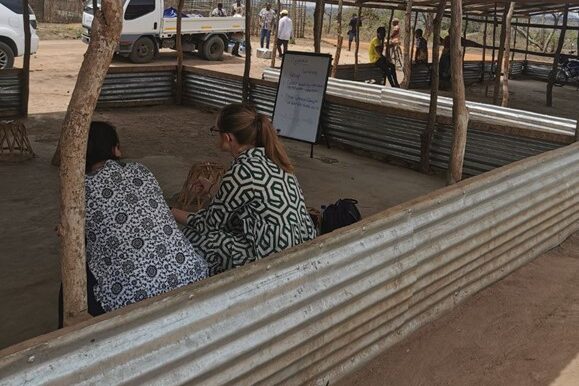
In this blog post we explore the pressing need for increased conflict sensitivity skills amongst those delivering aid in Northern Mozambique.
The ongoing armed conflict in Cabo Delgado, Northern Mozambique, is creating challenges to the effective delivery of humanitarian aid by the international community. A lack of conflict sensitive approaches by some international agencies has led to unintended consequences and hindered the delivery of aid to those who need it most.
Conflict sensitivity is an approach which helps those working in conflict-affected contexts minimise the negative impacts of their actions and work towards peace. In this blog post we explore the pressing need for increased conflict sensitivity skills amongst those delivering aid in Northern Mozambique. This includes having a solid understanding of the root causes of the conflict, learning from local expertise, and adapting actions based on this understanding.
The challenges of delivering international aid in Northern Mozambique
One of the critical issues that has emerged, and is now widely recognised in Northern Mozambique, is the unequal distribution of aid between internally displaced persons (IDPs) and host communities. While addressing the immediate needs of IDPs is crucial, neglecting the host communities has created feelings of resentment and worsened existing tensions. It is essential for aid organisations to recognise and respond to these grievances, adopting an inclusive approach which supports everyone who is affected. Conflict sensitivity guidance can help international aid agencies understand and address such disparities and existing lines of tension, ensuring they foster social cohesion rather than undermine it.
Another widely mentioned challenge is the recent influx of international organisations working in Northern Mozambique, which brings the risk of duplicating efforts and inadequate coordination. Without good coordination, efforts may inadvertently overlap, resulting in inefficient resource allocation and missed opportunities to address the critical needs of people. Such circumstances can not only lead to inefficacy but can also fuel grievances against international agencies or ignite tensions among the communities they serve. It is important for organisations providing international aid to have a space for reflection and to come together to build a common understanding of how they can contribute to peace.
How conflict sensitivity can help international aid agencies navigate these challenges
Aid agencies working in Northern Mozambique must prioritise conflict sensitivity expertise when delivering assistance. Having a clear picture of the conflict landscape, recognising the grievances arising from aid disparities, acknowledging and addressing corruption challenges, and promoting inclusivity and local participation are essential steps towards ensuring effective and sustainable aid delivery.
International organisations have a responsibility to invest in conflict sensitivity training and expertise, which will help them to navigate complex conflict dynamics, build meaningful relationships with local communities, and deliver aid that addresses the diverse needs of people affected by conflict. Building these skills include recruiting staff who have an excellent understanding of the communities agencies want to work with, and ensuring these staff can inform and influence context analysis and project design and adaptation.
We are working to strengthen conflict sensitivity skills amongst national and international humanitarian and development organisations in Northern Mozambique. We do this by helping agencies conduct and make sense of conflict analysis, to identify and prioritise conflict sensitivity risk and design mitigation strategies, and to design, adapt and monitor projects based on this knowledge.
This blog was written by Lorenzo Giuliani, Project Officer for the East and Southern Africa team. Learn more about why we are working in Northern Mozambique on this page, and how we are working there on this page.

